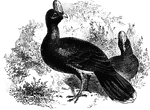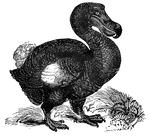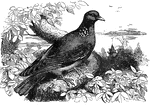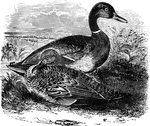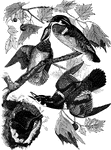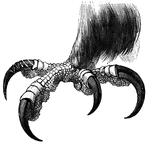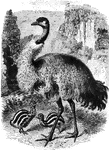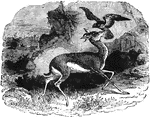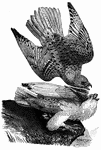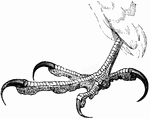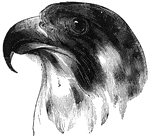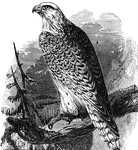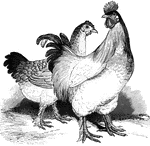
Rusty Crow-Blackbird
Resembling the crow-blackbird, the rusty crow-blackbird inhabits much the same region, but is less in…

Black-billed cuckoo
Averaging about twelve and a half inches in length, the black-billed cuckoo resembles the yellow-billed…
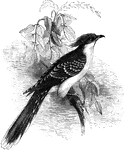
Great spotted cuckoo
The great spotted cuckoo divides its time between North Africa and Southern Europe, laying its eggs…
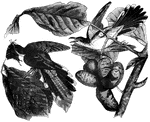
Yellow-billed cuckoo
Also known as the common American cuckoo, the yellow-billed cuckoo subsists on a diet of hairy caterpillars,…
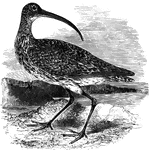
Curlew
Distinguished by a long, slender bill which curves downward, the curlew feeds mostly on worms, slugs,…

Black-Banded Dacelo
The black-banded dacelo, found around the Cape of Good Hope. They are known for feeding on earthworms,…
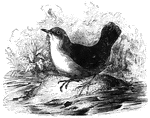
Black Dipper
The black dipper, also known as the European water-ousel, feeds on small shellfish and insects.

Red-throated diver
"The red-throated diver, twenty-four inches long, is common to Europe and America. This is called scape-grace…

Rock dove
Common to Europe and Asia, the rock dove makes its home among the high rocks of the coast.
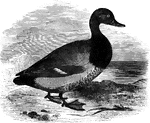
American Scaup Duck
The American scaup duck is common in North America, accidental in Europe. It is also known as the creek…
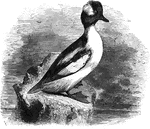
Buffle-Headed Duck
The buffle-headed duck builds its nest in the hollow of trees, and averages about thirteen inches in…

Harlequin Duck
"The harlequin duck is a very beautiful but small species, fourteen inches lng; fond of the eddying…
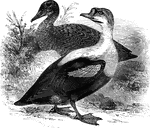
King Duck
Found in the Arctic regions of Europe, Asia, and North America, the king duck strongly resembles the…
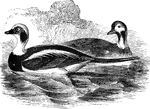
Long-Tailed Duck
Also known as the old-wife, the long-tailed duck measures about seventeen inches, not including its…

Mallard Ducks
The mallard, also known as the common wild duck averages about twenty-four inches in length. It inhabits…
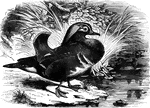
Mandarin Duck
The Mandarin duck, also known as the Chinese teal and the fan-tail duck, is domesticated in China and…
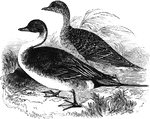
Pintail Duck
The pintail duck measures twenty-six to twenty-eight inches in length (including the tail), and is found…
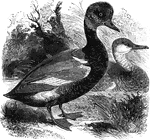
Red-Crested Whistling Duck
The red-crested whistling duck measures about twenty-two inches in length, and is found throughout Europe…
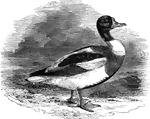
Common Sheldrake Duck
Also known as the burrow-duck and the sly goose, the common European sheldrake has been known to make…

Eider Ducks
The eider duck is found throughout the northern regions of Europe and North America. The female lines…
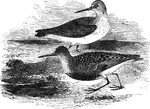
Dunlin
Also known as the purre, stint, ox-bird, and the sea-snipe, the dunlin is found throughout Europe and…
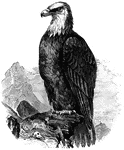
Bald Eagle
Bald (or white-headed) eagle, H. leucocephalus, common along sea-coasts, lakes, and rivers.
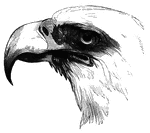
Head of a Bald Eagle
The head of a bald eagle. The distictive white plumage of this area earned it its nickname.
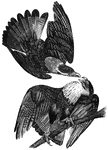
Caracara Eagle
The caracara eagle, genus Caracara found in Cental and South America, as well as portions of…
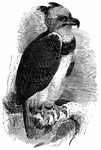
Harpy Eagle
Genus Harpyia, it is one of the largest, most fierce, and powerful eagles. It has a crest of…
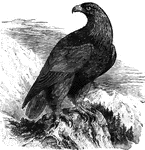
Royal Eagle
Also known as the common eagle of Europe, (A. fulvus) these large eagles nest on the inaccessable…

Nests of the genus Euplectes
Woven of grass, the nests of the genus Euplectes have an opening which faces down towards the water.…
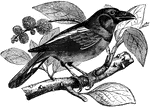
Java Eurylame
This small bird is native to Java, Sumatra, and New Guinea. It is noted for its large bill.

Falconelle
Native to Australia, the falconelle is approximately the size of a sparrow, and resembles the great…

Bull Finch
Resembling a grosbeak, the bull-finch is common and England, and can be found in other regions of Europe…

Hawfinch
Feeding on pollen-stalks, laurel-berries, and the like, the haw-finch is also known as the common grosbeak…
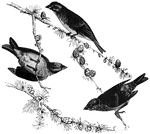
Purple Finch
The purple finch, also known as the American linnet, has a habit of erecting the feathers of its head…
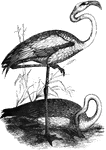
Flamingoes
The American flamingo stands about five feet tall, and is found throught tropical America, including…
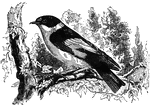
Collared Flycatcher
The collared fly-catcher, a bird which feeds on insects and the occaisional small vertebrate.
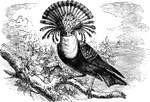
King Flycatcher
An impressive South American species of fly-catcher, with a transverse crest of reddish-fawn feathers.

Savannah Flycatcher
Found in the southern United States, the Savannah fly-catcher is notable for its long, forked tail.
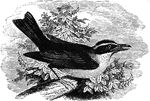
Spoonbill Tyrant Flycatcher
The spoon-bill tyrant fly-catcher has a large, thick bill, which it uses for feeding on butterflies.

